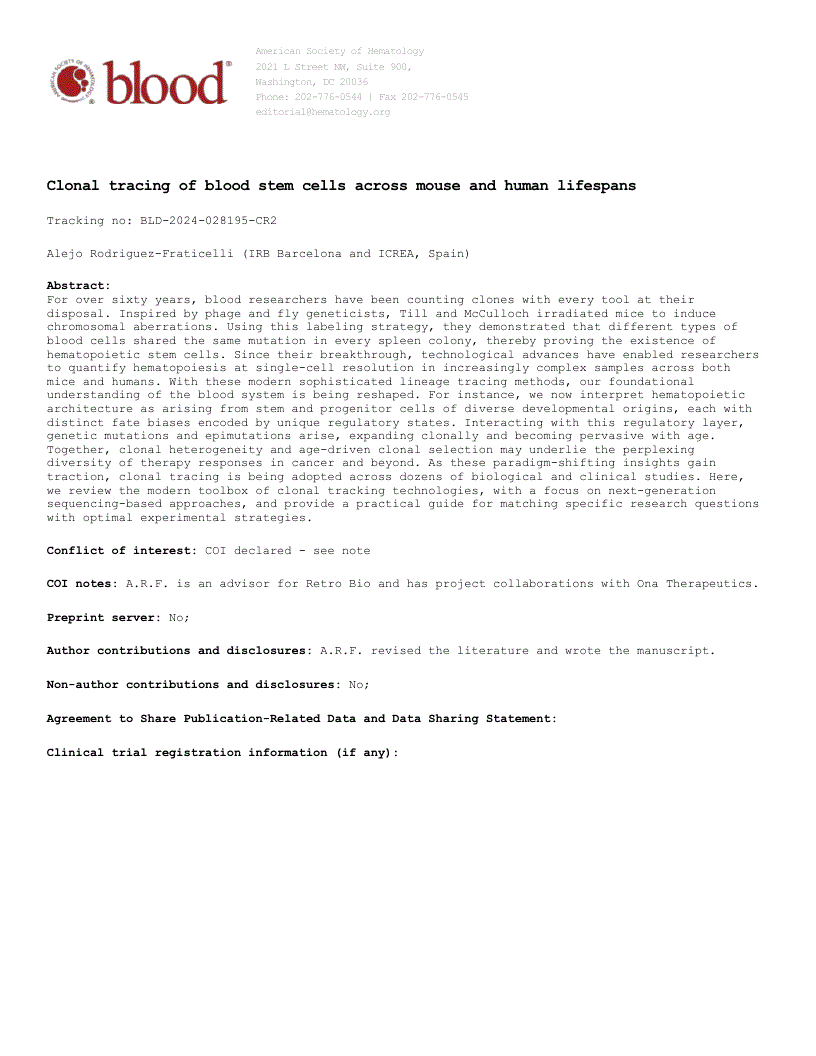For over sixty years, blood researchers have been counting clones with every tool at their disposal. Inspired by phage and fly geneticists, Till and McCulloch irradiated mice to induce chromosomal aberrations. Using this labeling strategy, they demonstrated that different types of blood cells shared the same mutation in every spleen colony, thereby proving the existence of hematopoietic stem cells. Since their breakthrough, technological advances have enabled researchers to quantify hematopoiesis at single-cell resolution in increasingly complex samples across both mice and humans. With these modern sophisticated lineage tracing methods, our foundational understanding of the blood system is being reshaped. For instance, we now interpret hematopoietic architecture as arising from stem and progenitor cells of diverse developmental origins, each with distinct fate biases encoded by unique regulatory states. Interacting with this regulatory layer, genetic mutations and epimutations arise, expanding clonally and becoming pervasive with age. Together, clonal heterogeneity and age-driven clonal selection may underlie the perplexing diversity of therapy responses in cancer and beyond. As these paradigm-shifting insights gain traction, clonal tracing is being adopted across dozens of biological and clinical studies. Here, we review the modern toolbox of clonal tracking technologies, with a focus on next-generation sequencing-based approaches, and provide a practical guide for matching specific research questions with optimal experimental strategies.
Skip Nav Destination
Review Article|
September 22, 2025
Clonal tracing of blood stem cells across mouse and human lifespans Available to Purchase
Alejo E Rodriguez-Fraticelli
IRB Barcelona and ICREA, Barcelona, Spain
* Corresponding Author; email: Alejo.Rodriguez-Fraticelli@irbbarcelona.org
Search for other works by this author on:
Blood blood.2024028195.
Article history
Submitted:
July 7, 2025
Revision Received:
August 25, 2025
Accepted:
August 25, 2025
Citation
Alejo E Rodriguez-Fraticelli; Clonal tracing of blood stem cells across mouse and human lifespans. Blood 2025; blood.2024028195. doi: https://doi.org/10.1182/blood.2024028195
Download citation file:
My Account
Sign InAdvertisement intended for health care professionals
Cited By
Advertisement intended for health care professionals


This feature is available to Subscribers Only
Sign In or Create an Account Close Modal